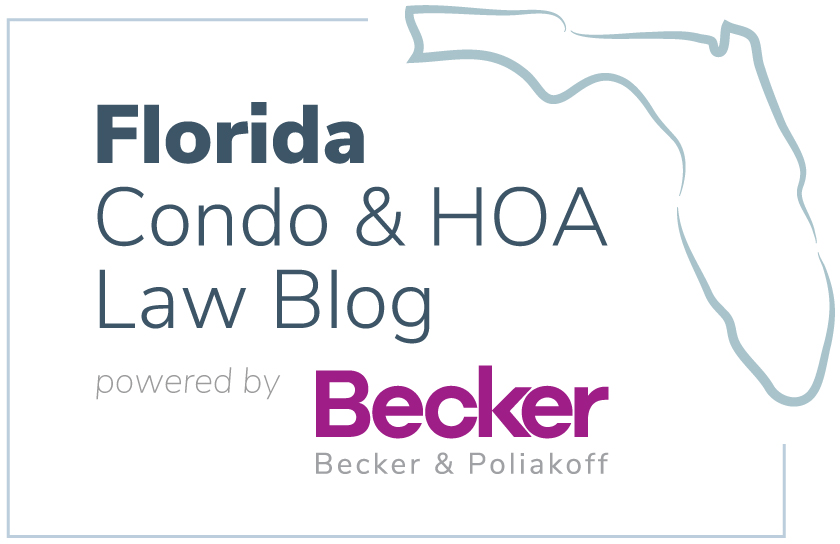
Enforcing HOA restrictions can be a formidable task, implicating myriad overlapping declaration provisions, association rules, and Florida law. And going to court to get injunctive relief – a court order requiring an owner to comply – can seem even more daunting. The elements that are required to establish a basis for injunctive relief are: (1) a clear legal right which has been violated; (2) irreparable harm; and (3) lack of an adequate remedy at law. Amelio v Marilyn Pines Unit II Condo Assn, 173 So.3d 1037 (2nd DCA 2015). Typically, a party must provide evidence for each of these elements just to establish the party’s legal right to seek injunctive relief from the court.
However, if an owner has installed or constructed an improvement on his property, without the requisite association approval (or was denied and proceeded anyway), Florida courts have found that the existence of the non-approved structure itself is sufficient to establish an association’s prima facie case, that is, to state its claim for injunctive relief. Once having shown the installation and lack of approval, the presumptive right to an injunction is met, and the burden then shifts to the owner. From that point on, it is the owner who must prove his case convincing the court why he or she did not have to seek association approval, or, if denied, proving to the court that the association somehow abused its discretion or acted in an unreasonable or arbitrary manner.
When a party seeks an injunction to prevent violation of a restrictive covenant, the party establishes a prima facie case by presenting evidence showing the violation. Killearn Acres Homeowners Assn v Keever, 595 So.2d 1018 (1st DCA 1992). Irreparable injury is not required to be shown to enjoin a violation of a restrictive covenant affecting property. Blue Reef Holding Corp., Inc. v. Coyne, 645 So.2d 1053 (4th DCA 1994). Injunctive relief requiring the removal of a structure has been found to be a proper means of enforcing a restrictive covenant affecting real estate. Velickovich v. Ricci, 391 So.2d 258 (4th DCA 1981) (Granting injunction for removal of wall which owner installed without seeking association approval). When buildings or structures have been erected in breach of a restrictive covenant, their removal or alteration may be ordered, especially where the structure has been erected with full knowledge of the restriction and in willful violation of the Plaintiff’s rights. Daniel v. May, 143 So.2d 536 (2nd DCA 1962).
The mere absence of association approval, or the failure to apply, will suffice to render the structure subject to injunction. The court in Wasserstrom v Wyndemere HOA, 779 So.2d 285 (2nd DCA 1998) wrote: “While the committee’s approval process may be subject to criticism, and notwithstanding the lack of opposition from many of the other homeowners, the fact remains that the appellants installed the new roof without obtaining the final approval required by the restrictions governing the residential development. Accordingly, the trial court’s final judgment for permanent injunction is affirmed.”
The association having put on a prima facie case showing the violation of the restrictive covenants, the burden then shifts to the defendants to show how the association acted in an unreasonable or arbitrary manner. Miami Lakes Civic Assn v Encinosa, 699 So.2d 271 (3rd DCA 1997). And Florida courts have found that this burden of proving that an association has abused its discretion is a heavy one. See: Killearn Acres Homeowners Assn v Keever, 595 So.2d 1018 (1st DCA 1992) (finding that the homeowners failed to prove that the association exercised its discretion in unreasonable or arbitrary manner in seeking to enjoin owner who installed satellite dish in his side yard: the association had declined to take action against eight other owners who had satellite dishes in their back yards).
Furthermore, the courts have determined that restrictions in a Declaration are afforded a strong presumption of validity. The appellate court in Emerald Estates Comm Assn v Gorodetzer, 819 So.2d 190 (4th DCA 2002) held that the discretion of the association is in no way circumscribed by the exclusive consideration of objective criteria. The governing documents may impart a clear intent on behalf of the association to reserve control over the design and aesthetics of the community. In Europco v Smith, 572 So.2d 963 (1st DCA 1990), the court found no selective enforcement in an association’s discretionary rejection of owner’s porch application due to use of non-harmonious materials, as the owner failed to demonstrate arbitrary or unreasonable action.
This historically wide latitude for HOA or ARB discretion had at times resulted in overreaching by HOA board or ARB committees. In response, the Florida legislature added language to the Florida HOA law (at F.S.720.3035) which limits the association’s discretion in this regard. An association’s authority to “review and approve plans and specifications for the location, size, or appearance of any structure or other improvements on a parcel, or to enforce standards for the external appearance of any structure or improvement on a parcel, shall be permitted only to the extent that the authority is specifically stated or reasonably inferred as to such location, size, type, or appearance in the declaration of covenants or other published guidelines or standards authorized by the declaration of covenants.” Essentially, this means that boards and architectural committees must be able to point to a specific provision in the documents or rules which authorizes review of whatever item, and design aspect thereof, is the subject of their review. This statute also establishes a “reasonableness” standard for architectural controls: “[T]he construction of permitted structures and improvements on the parcel…shall not be unreasonably infringed upon or impaired by the association…”(F.S.720.3035(4)).
In the final analysis, this provision of the Florida HOA law does not materially impair the court decisions that preceded it: it really just requires that associations abide by the provisions of their own documents, and limit their scope of review to the that which is authorized in their governing documents. As long as an association’s denial is based on specific criteria in the governing documents, or if the owner acted without the requisite application for approval, the association’s right to injunctive relief to remove the offending structure is presumed, and the owner has the burden of proving some adequate defense for his actions in order to overcome this presumption.


